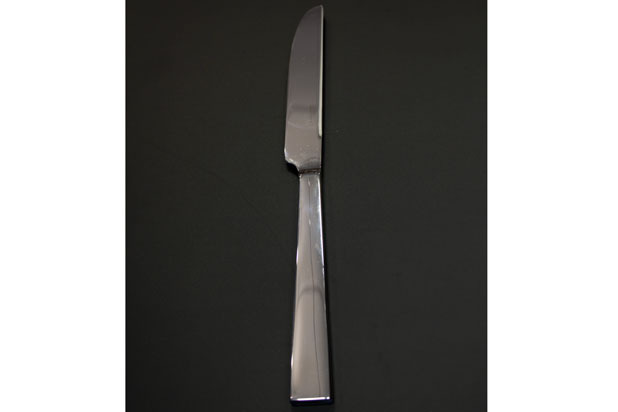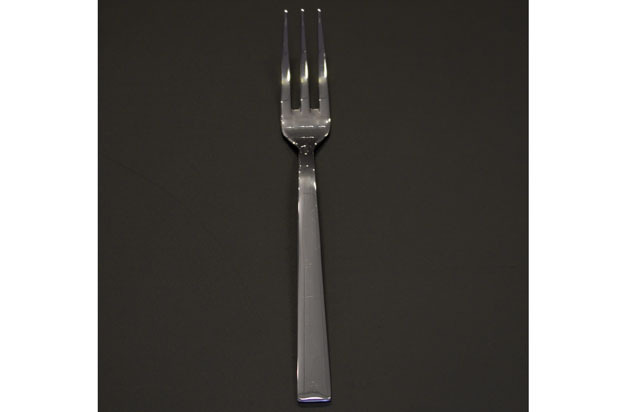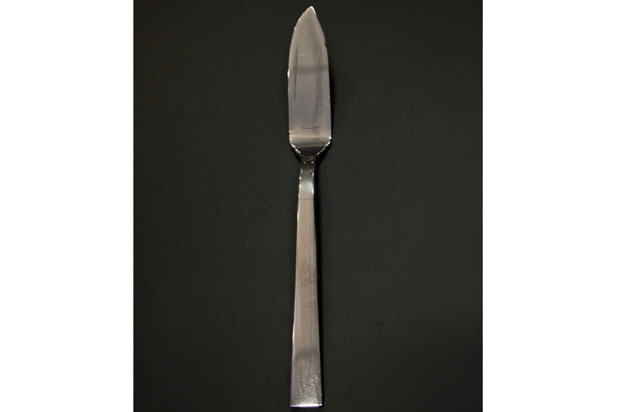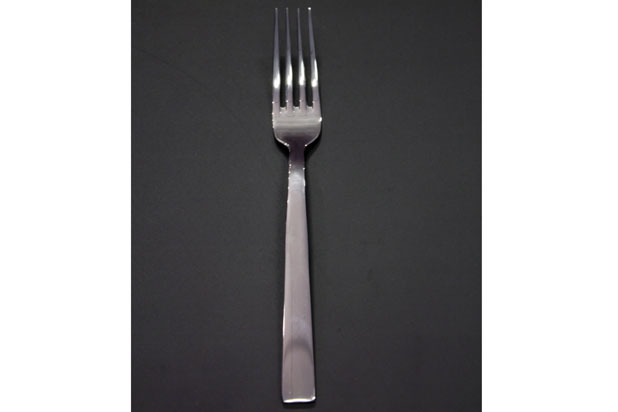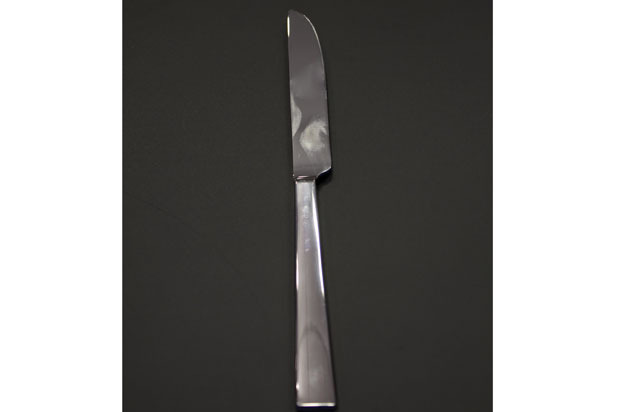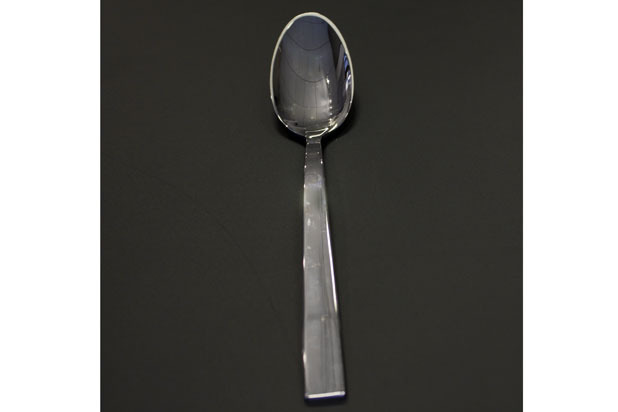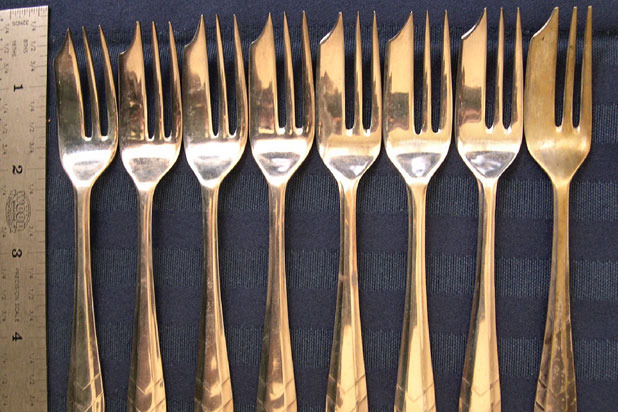What You Need To Know About Table Settings Slideshow
It's meant to be used to aid in picking up food with the fork (and before the 16th and 17th century, when forks became more popular, it was used with the spoon), not for lifting food to the mouth, or licking. When setting the table, place the sharp side towards the plate — some say it's like saying f-you to your neighbor if you face a knife blade out.
Fish Fork
We'll start to the left of the plate.
It's not just pretty to look at (or best for combing your hair like Ariel did in The Little Mermaid). Slightly curved, the fish fork traditionally has a wider left tine which is thought to add extra leverage when cutting through more delicate foods.
Fish Knife
Just because it looks more like a dagger doesn't mean it's for spearing your tomatoes, potatoes, or your neighbor at the table. The knife's pointed tip aids in removing any hidden pinbones lurking in your salmon steak while the palette-shaped body acts as more of a pusher than a cutting implement.
Dinner Fork
The long, narrow tines make spearing a cut of meat — like steak, not your neighbor — easy.
Salad Knife
Now, to the right of the dinner plate.
A slightly smaller cousin to the dinner knife that is not to be confused with the even more petite butter knife, this knife usually features a rounded, blunt tip, sometimes with a little indentation, for easy spreading.
Salad Fork
No, it's not the dinner fork for little kids or for those with small mouths (What, do you measure your dinner guests' palates when they come in the door?) It's the smaller cousin of the dinner fork because salads are often less dense than an entrée and easier to pick up.
Dinner Spoon
It was around long before the fork. With a larger, more round-shaped bowl (in some place settings, the bowl is round), the spoon is able to hold more liquid (without spilling) thanks to its greater surface area — perfect for soup. But sadly, it doesn't stick to your nose as nicely as a regular spoon.
Dessert Spoon
Now for what lies above the plate*:
Positioned at the top of a place setting with the stem of the spoon pointing right, the dessert spoon (also called a serving spoon in the U.K.) has a capacity of approximately one tablespoon, is more egg-shaped than the soup spoon, and is meant to be used to eat desserts and cereals.
It's not to be confused with a teaspoon, which is slightly smaller (and is to be used for tea and coffee).
*The dessert utensils might lie above the plate when you dine at a friend's home. In restaurants, typically the dessert utensils are not presented unless you do order dessert, so it makes it easy.
Dessert Fork
Found between the dessert spoon and the top of the plate, the dessert fork (also known as a pastry fork) traditionally has three tines as opposed to four, with the left tine wider than the other two. It's again designed for leverage when cutting through cake and pastry, not for combing your bangs or brows.
